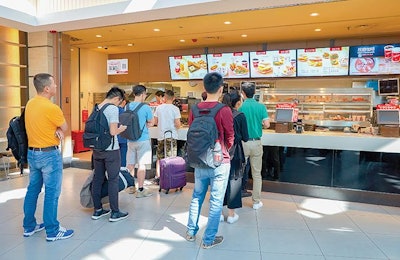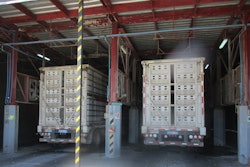
Expectations for Asia’s poultry producers, as with those in the rest of the world, are broadly positive this year.
Growth in the region’s economy, forecast to be more than 5 percent, will again be the fastest growing in the world this year, even if the rate of expansion will be below that of 2018.
For the poultry industry, with rising consumer incomes and demand, generally favorable feed supplies in many countries, and no widespread outbreaks of highly pathogenic influenza, the general stage would appear to be set for a positive 2019, even if there may be some potential clouds on the horizon.
China, record high prices
The misfortunes of China’s swine sector are proving positive for the country’s chicken producers, as consumers increasingly look to the country’s second favorite meat.
Prior to ongoing outbreaks of African swine fever that started in early August 2018, and after a period of rather weak demand for chicken meat, the U.S. Department of Agriculture (USDA) forecast that chicken meat production in China would increase by 3 percent this year to 12 million metric tons.
This might now appear to be somewhat of an underestimate. Chicken prices reached record highs toward the end of last year, as demand increased in response to a lack of affordable pork supplies and safety concerns over pork production.
Rising demand for product is not the only positive for the sector; producers are also benefiting from favorable feed costs. However, they remain constrained by lower levels of breeding stocks -- the result of various trade bans.
China’s output, consumption and imports are all expected to be higher this year, and if the local industry is unable to respond to rising demand, imports will rise.
Despite difficulties, Brazil remains the country’s largest supplier. However, at the start of the year, China was increasingly sourcing from Thailand and Eastern Europe, notes Rabobank.
Depending on the outcome of trade discussions with the U.S., China could restart imports from that country. U.S. product has been excluded from the Chinese market since 2015 due to avian influenza concerns. At its peak in 2008, the U.S. exported poultry products to China with a value of US$722 million.
However, should the outcome of trade talks between China and the U.S. prove negative, there could be an impact on the Chinese economy as well as on those of other countries in the region.
Indonesia, tight supplies
Indonesia ended 2018 with failing broiler prices and integrators reporting lower earnings. While long-term demand is expected to continue rising, growth for the year ahead is expected to be flat.
The supply of day-old chicks is expected to remain constrained during the first half of this year, reports Rabobank, although this may ease in the second half.
The country’s breeding sector may have recorded higher profits last year, but these were offset by difficulties in other areas, such as high feed prices.
Steady growth in Japan
“Steady” growth is forecast for Japan’s chicken production this year, continuing the estimated 2 percent growth in output recorded in 2018. By year-end, output is forecast to stand at 1.73 million metric tons.
The outlook for the Japanese industry is highly competitive, and the trend of smaller producers exiting the market is expected to continue.
The sector is producing more chicken but from fewer producers and benefiting from scale efficiencies, translating into higher production levels. In parallel, the sector has increasingly moved to stocking higher-yielding breeds.
Consumption is also expected to continue upwards, although possibly at a slower rate than last year, rising by 2.5 percent to 2.835 million metric tons. This will be driven by the ongoing demand for affordable animal protein and newly popular product presentations.
Additionally, the USDA notes that an aging population and increasing urbanization are expected to continue bolstering demand for prepared meals and ready-to-eat food. It also notes that there is a growing taste for breast meat, rather than the more traditionally preferred thighs.
Japan is expected to import more chicken meat this year and imports are expected to grow by 3 percent.
But against this positive outlook, Rabobank notes that chicken prices in the country started the year under significant pressure, both for legs and breast meat and that stock levels are significantly above historic levels.
It notes that the outlook for the Japanese market remains highly competitive.
Thailand
Thailand’s broiler meat production is forecast to grow by 4 percent to 3 million metric tons, driven by rising demand from home and overseas markets.
The outlook is particularly positive, given that the sector has been dealing with higher feed costs and struggling with lower-than-break-even prices for broilers.
Chicken meat consumption in the country is thought to have grown by 3-4 percent last year and, while growth will continue in 2019, it is forecast to be at a lower rate, 2 percent, due to higher live broiler and meat prices.
Stronger growth, in the region of 5-6 percent, however, is forecast for the ready-to-eat and quick-service sectors. However, it should be remembered that 60-70 percent of local Thai chicken purchases still occur in traditional wet markets.
Thailand’s chicken meat exports are estimated to have risen by 8 percent last year and forecasts suggest that, this year, they will grow by a further 6 percent to 870,000 metric tons.
Rabobank notes, however, that the outlook for the Thai poultry industry remains challenging. Better management of production growth would help to solve 2018’s oversupply challenges and address profitability issues. However, it goes on to note that this may not be easy given that plant expansions will come on line this year.

Absolute consumption of poultry meat has grown significantly since the start of the decade. However, with per capita meat consumption in some countries remaining relatively low, there remains much potential for further growth.


















